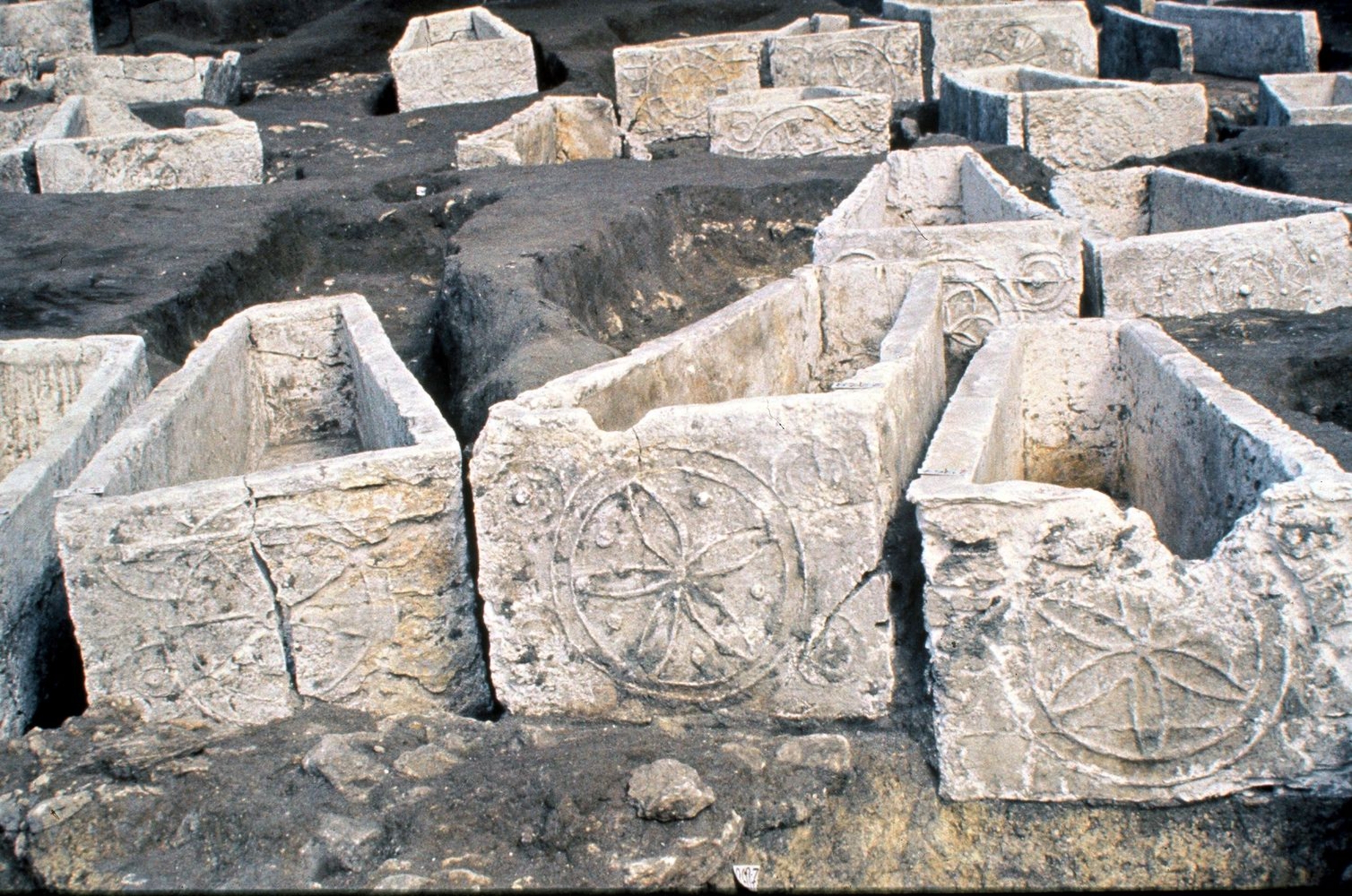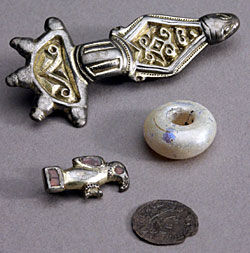- Home
- The town and the abbey
- The site from its origins
- Early history
- A grave from the exterior necropolis
Objects from the grave of a woman from the late 5th or early 6th century.
© UASD / J. Mangin.
To the north of the abbey, the Archaeological Unit discovered several graves belonging to a cemetery located outside the original basilica . The graves were those of early Christians, buried in wooden coffins. The bodies were placed so that they faced east, the direction from which, according to Christian tradition, the Resurrection would be announced. The graves retain, however, traces of pagan practices, such as that of placing objects with the body. Thus, archaeologists discovered the tomb of a woman that contained clothing accessories characteristic of the late fifth and early sixth centuries. The deceased wore a garment held together by two gilded silver brooches. One, in the form of a bird, is set with garnets. The other, a radiate-headed bow brooch, is decorated with an interlace pattern. The accessories also included a glass bead.
A coin was found in the mouth of the deceased. This has to do with the ancient belief that the souls of the dead had to give an offering to Charon, the ferryman who transported them across the Styx, the river of Hades. Nevertheless, one wonders whether the Merovingians who continued to practice this ritual were aware of its original meaning.

